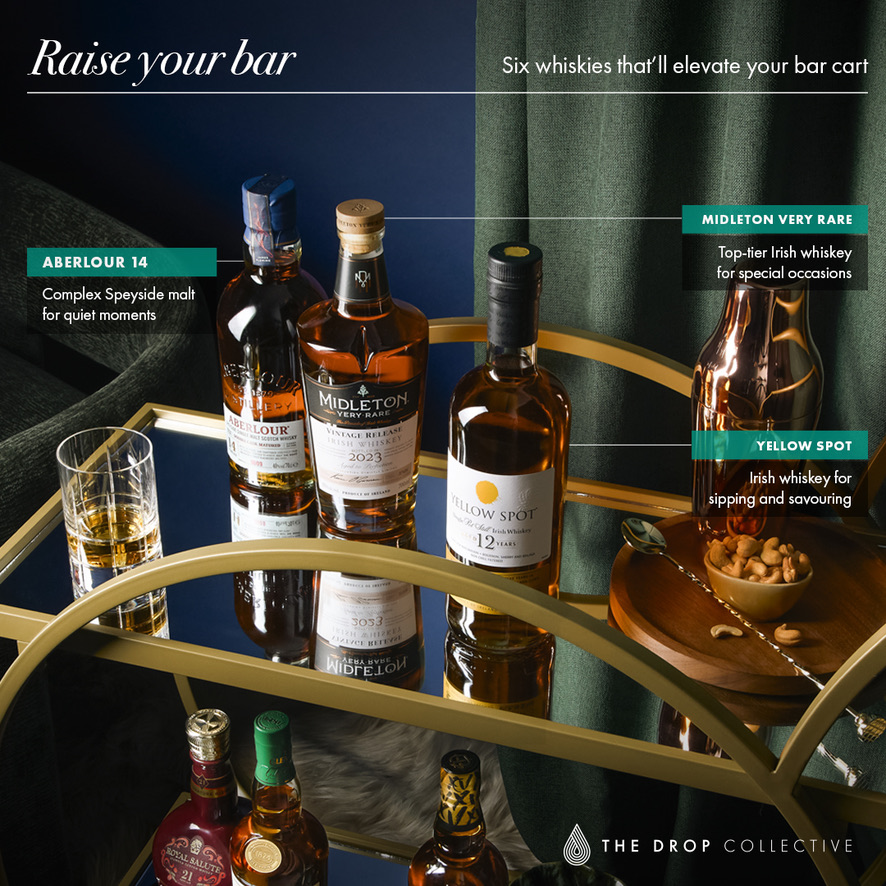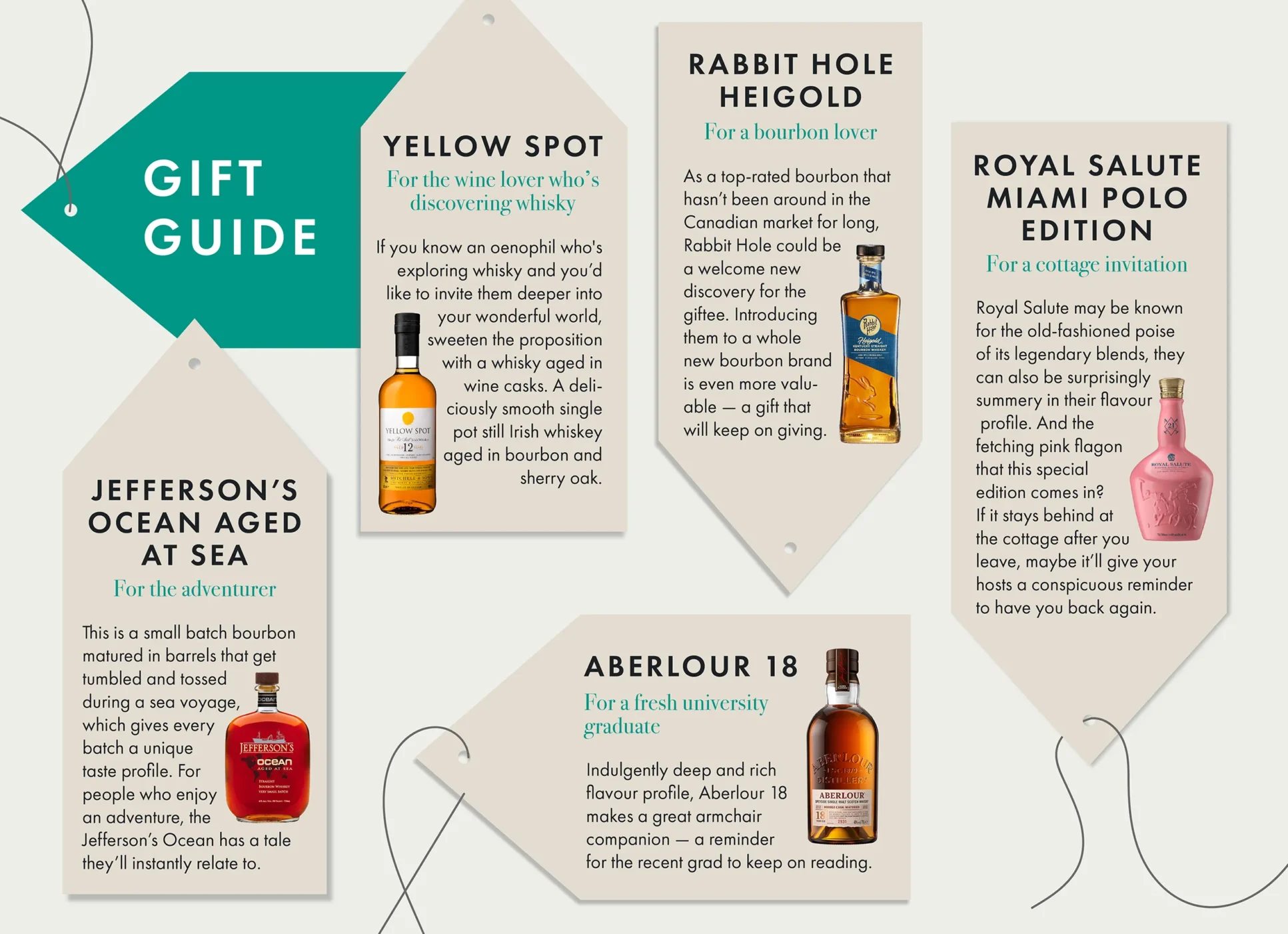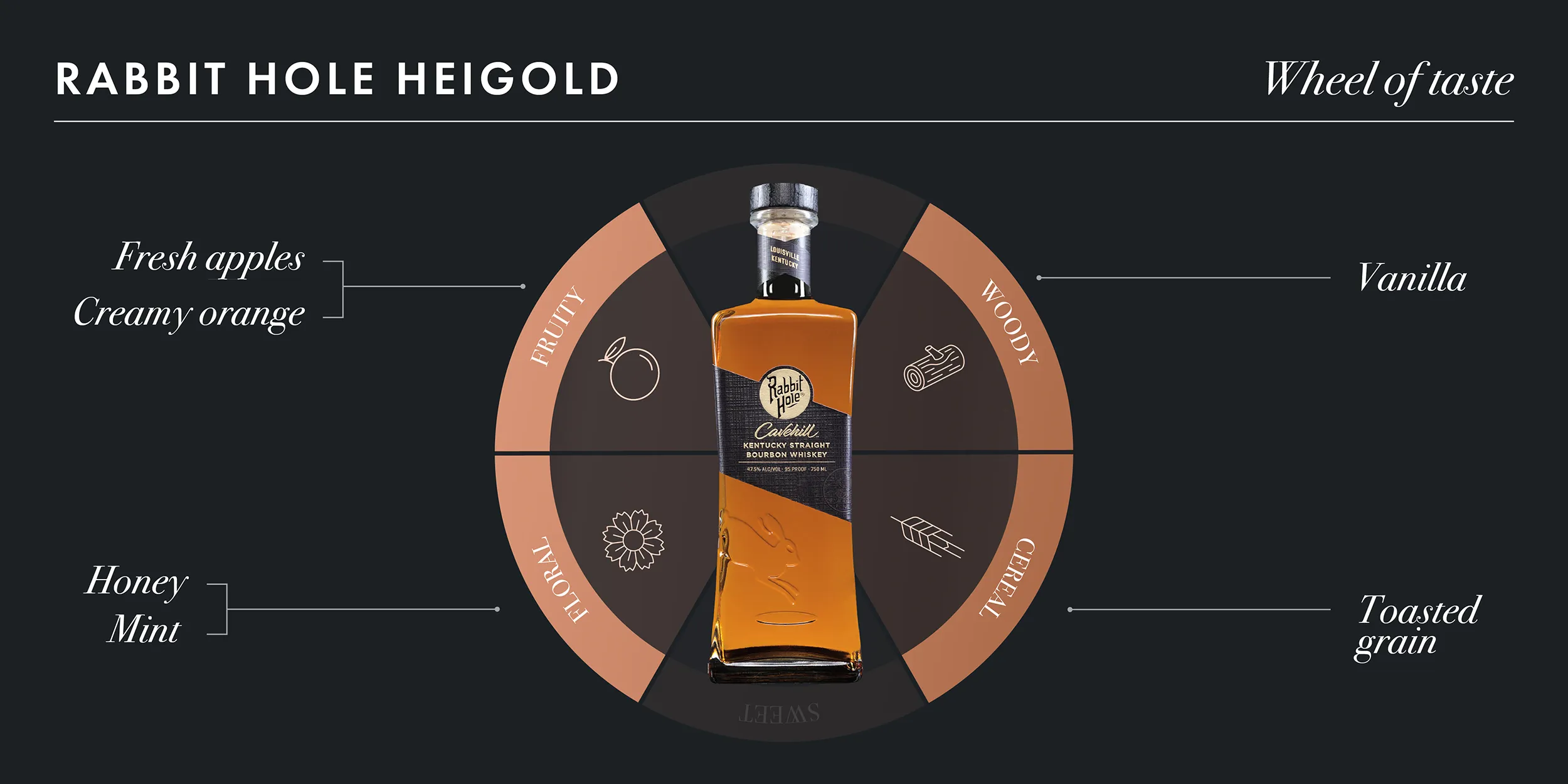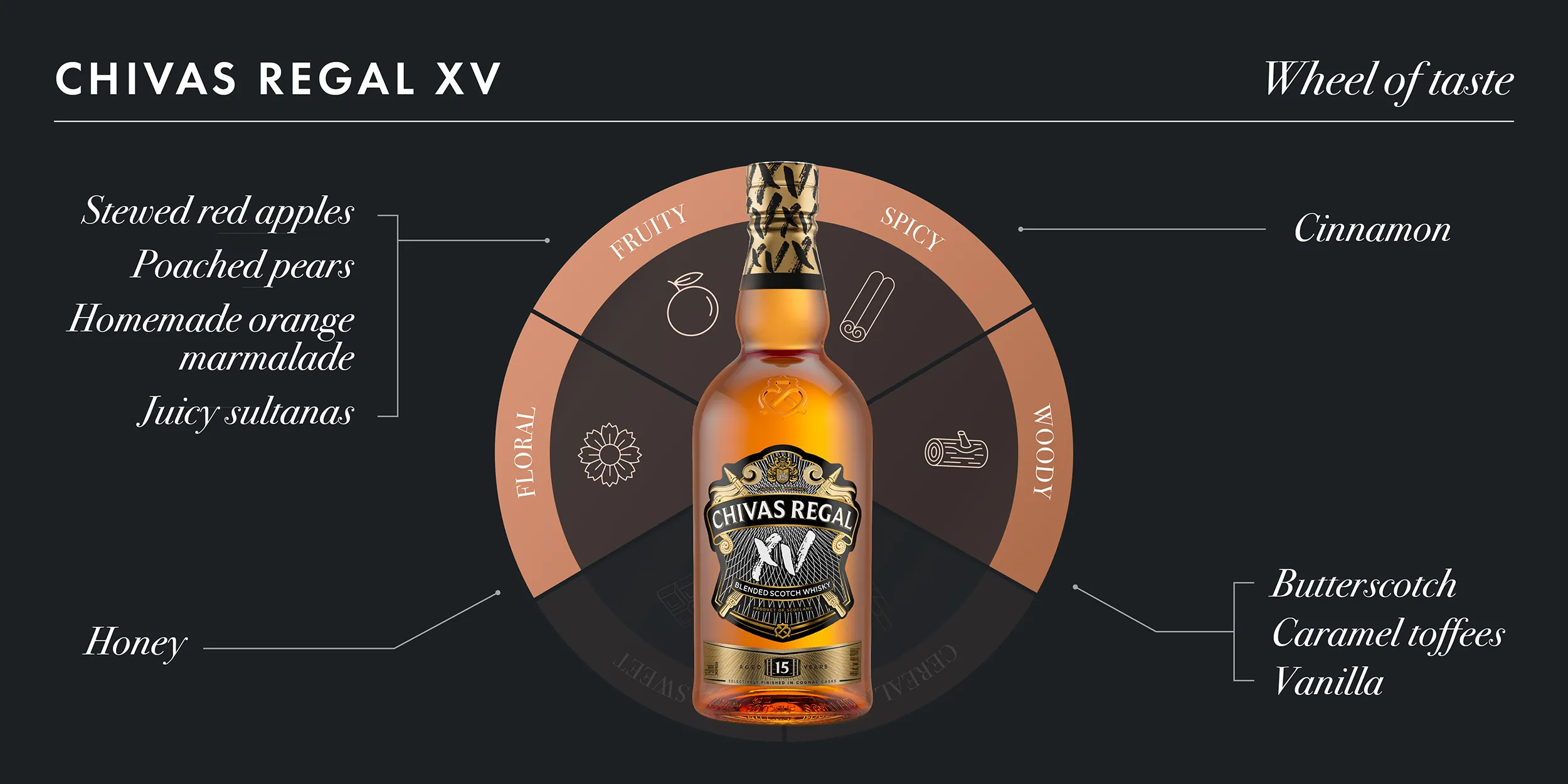The Drop Collective’s distilled guide to whisky and how to enjoy it
If there’s one thing whisky lovers know, it’s that the more you learn about it, the more you realize there is to learn.
So, to feed your thirst for knowledge — and fuel your hunt for the best, rarest and most enjoyable whiskies — the Drop Collective presents Whisky: The Fundamentals. This page will help novices understand the world of whisky, while experts can use it as a handy reference and occasional refresher. (Because you can’t always remember, say, the difference between single malt and single pot still off the top of your head, right?)
The guide is divided into three sections:
- What is whisky? Learn about whisky types in Part I
- What is whisky made from, and how? Learn about whisky ingredients and processes in Part II
- Now, how to taste and serve whisky? Get tips on enjoying your dram in Part III
Before you dive in, make sure to get even more knowledge delivered to your inbox. Join the Drop Collective and you’ll also get advance notice on exciting whisky releases in Canada.
Irish whiskey
Irish whiskey is one of the world’s oldest distilled beverages, with its production roots deeply embedded in Ireland’s history. Alongside Scotland, Ireland is acknowledged as one of the initial whisky-producing countries.
Irish whiskey is particularly noted for its smoothness, which makes it appealing to a wide range of palates and suitable for various ways of consumption.
Despite its relatively small output, the Irish whiskey industry offers a growing and diverse range of products. This diversity is a result of the unique production processes and the types of whiskey produced in the country, including:
- Blended Irish whiskey, which combines malt and grain whiskies, creating a versatile, mixable and approachable spirit;
- Single pot still Irish whiskey. Unique to Ireland, this style is made from a mix of malted and unmalted barley distilled in a pot still. The inclusion of unmalted barley gives it a distinctive spicy character, setting it apart from other whiskey types. (Examples include the Spot Whiskeys — Blue Spot, Green Spot, Yellow Spot and Red Spot — and Redbreast);
- Single malt Irish whiskey, crafted from 100 per cent malted barley in a single distillery;
- Single grain Irish whiskey, which again is made in a single distillery, but from grain that is not malted;
- Blended malt Irish whiskey, a blend of two or more single malt whiskies from different distilleries.
The great Irish whiskeys (that is, the best-rated and legendary brands) span across all these categories.
How to drink Irish whiskey varies based on personal preference, with some enthusiasts preferring it neat to appreciate the full flavour, while others may enjoy it with a splash of water to dilute its strength slightly and release different aromas.
Scotch whisky
Scotland, alongside Ireland, stands as one of the original whisky-producing countries, with a distilling tradition that reaches back to the Late Middle Ages. Today, it proudly holds the title as the world’s largest whisky producer, offering a vast and world-famous range of brands known for their varied, complex and exquisitely balanced aromas and flavours.
By definition, Scotch whisky must be distilled and matured in Scotland for at least three years.
By far the two most popular types of Scotch whisky are:
- Single Malt Scotch whisky, which is produced from 100 per cent malted barley at a single distillery. Single malt Scotch is celebrated for its diversity; each distillery has its own distinct house style, which is usually a variation on the typical character of its region of origin. (Elegant and sweet for Speyside, for example.)
- Blended Scotch whisky, which accounts for more than 90 per cent of Scotch whisky production, combines malt and grain whiskies from different distilleries. Contrary to common myth, blended Scotch is not just for beginners or inferior to single malt. Many of the “best” and highest-rated Scotch whiskies on the market are blended, and are appreciated for their balance, versatility and superior mixability.
The region of Scotland in which a whisky is produced plays a crucial role in its flavour profile. The primary regions include Islay, known for its peaty whiskies; Speyside, which has by far the largest number of distilleries and is celebrated for its sweet and fruity characteristics; the Highlands, offering a diverse range of flavours; and the Lowlands, known for lighter and more delicate whiskies.
For those new to Scotch, selecting the best beginner Scotch involves considering both flavour preferences and the whisky’s complexity. Unpeated, smoother whiskies from Speyside, like The Glenlivet, are often recommended for beginners thanks to their accessible character. And thanks to their balance, blended Scotch whiskies like Chivas Regal are very suitable for novices as well.
As with Irish whiskey, how to serve and drink Scotch varies based on personal preference. Some prefer it neat, while others enjoy it with soda water or ginger ale in a “highball.” Many serious connoisseurs insist that a splash of water “opens up” the aromas and is the best way to appreciate a favourite or unfamiliar Scotch.
Did you know? There are nearly 150 operating distilleries in Scotland, which together produce some 1.35 billion bottles of whisky for export each year — more than the industries of the United States, Japan and Ireland combined.
Bourbon whiskey
Bourbon whiskey, a distinctive American spirit, has its roots in the 19th-century whiskies of Kentucky. From there, it evolved into a robust and flavourful whisky style enjoyed worldwide. Bourbon is noted for its paradoxical balance between boldness and smoothness, and an overall sweet profile compared to other whiskies. Since the emergence of super-premium bourbons in the 1980s and ’90s, bourbon has elevated its reputation to a level where the best-rated and rare bourbons are as sought after as their Scotch counterparts.
Not all American whiskey qualifies as bourbon. To earn the bourbon label, according to U.S. law, the spirit must adhere to specific criteria:
- The mash (the mix of grains used in the fermentation) must contain at least 51 per cent corn; this contributes to bourbon’s characteristic sweetness.
- It must be aged in newly charred oak barrels, which impart a distinct flavour and colour.
- Bourbon must be distilled to no more than 80 per cent alcohol by volume (ABV), entered into the barrel for aging at no more than 62.5 per cent ABV, and bottled at 40 per cent ABV or more.
Did you know? Contrary to common belief, bourbon does not need to be produced in Kentucky. It can be distilled anywhere in the United States.
Enjoying bourbon, as with all whiskies, is a matter of individual taste. It can be savoured neat, with water, on the rocks, or as part of a cocktail. Drinking bourbon neat or with a splash of water can help the drinker appreciate its full range of flavours and aromas. Meanwhile, bourbon cocktails, like the old fashioned and the mint julep, take advantage of bourbon’s bold flavours, which noticeably shine through even when it’s mixed with other ingredients.
Tennessee whiskey
Tennessee whiskey is similar to bourbon, but it’s filtered through charcoal chips before maturation. This unique step is called the Lincoln County Process and it’s essential to the character of Tennessee whiskey; distillers believe it removes impurities and imparts a smooth, mellow flavour.
Tennessee whiskey must meet certain criteria, which are similar to those that govern bourbon. (Yes, it must be made in Tennessee.)
Canadian whisky
Canadian whisky is the crown of Canada’s rich distilling history, which dates back to the early 19th century. Canada became the first country to legally define the quality parameters for its whisky in 1890, setting a high standard for production and craftsmanship. Today, Canadian whisky encompasses a wide range of flavours, from mellow blends to spicy ryes. Canadian whisky has experienced a well-deserved resurgence in popularity and critical acclaim in recent years.
A hallmark of traditional Canadian whisky is its distinctive method of production. Typically, whisky-makers in Canada distill each grain type — most often corn, rye, barley and wheat — separately, and then blend the distilled spirits together. This approach allows for a precise control over the flavour profile of the final product, and it makes Canadian whisky somewhat unique in the whisky world.
Canada’s regulations give distillers the creative latitude to produce a wide array of flavours. This versatility ranges from the traditional mellow, sweet vanilla- and caramel-scented blended whiskies that Canada is renowned for to spicy all-rye whiskies and complex single malts. The best and top-rated Canadian whiskies span this entire flavour spectrum, catering to a variety of palates.
Did you know? Canadian whisky is colloquially known as “rye” within Canada, even if the grain bill contains little to no rye. This convention stems from historical practices and continues today; asking for “rye” in Canada typically means requesting Canadian whisky, regardless of its actual rye content.
How to serve Canadian whisky is a question of personal preference. Traditionally, Canadian whisky was often known for its mixability — often with ginger ale or cola, or in a cocktail (most famously, the manhattan). Today, however, as whisky enthusiasts rediscover Canadian whisky, they’re finding that the best and top-rated Canadian whiskies are as suitable as any of their international peers to be served neat or with a splash of water and savoured carefully.
Rye whisk(e)y
Rye whisky is celebrated for its distinctive spicy and floral character, deriving from the rye grain. This type of whisky is predominantly produced in two varieties: Canadian and American, each with its own traditions, regulations, and flavour profiles.
Canadian rye whisky
In Canada, a whisky can be called rye without necessarily containing a significant amount of rye grain. This tradition stems from the early days of Canadian distilling when rye was commonly used to impart a spicy flavour to whisky, and its presence became synonymous with Canadian whisky.
In recent years, there has been a trend in the Canadian distilling scene toward producing rye whiskies that do indeed feature a majority (and sometimes even 100 per cent) rye in their grain bill. These Canadian rye whiskies are known for their robust and spicier notes compared to more traditional, milder Canadian whiskies.
American rye whiskey
In the United States, rye whisky follows a stricter definition. It must be made with at least 51 per cent rye, which imparts the whisky with its characteristic spicy flavour. American rye whiskey shares some flavour characteristics with Canadian rye-forward whiskies but typically exhibits a distinct profile due to differences in distilling practices between the two countries. The result is a richly spicy and bold spirit that works particularly well in cocktails.
When a cocktail recipe calls for rye whisky, either American or Canadian is acceptable, depending on your preference. Thanks to its bold flavour profile, Lot 40 is an example of a Canadian rye whisky that will perform well even in cocktails that were written with American rye in mind.
Japanese whisky
Originally inspired by the distilling methods of the Scotch whisky industry, Japanese whisky has developed its own distinct identity, characterized by a focus on refinement and balance. With offerings that range from light and floral to more complex and peated profiles, Japanese whiskies have gained international acclaim and the interest of whisky enthusiasts worldwide.
Single malt whisky
“Single malt whisky” refers to whisky made exclusively from malted grain — generally barley — produced at a single distillery. The term is most commonly associated with Scotch whisky. And while the “best” Scotches are by no means all single malts (see blended whisky), the category nevertheless evokes a certain mystique and prestige in the minds of whisky lovers.
The tradition of crafting single malt whisky extends to the other major whisky-producing countries as well. Ireland and Japan are especially notable for producing famous and top-rated single malts.
Did you know? Single malt Scotch is a newer product category than you may think. Before the 1960s, blended whisky dominated, and relatively little single malt was ever sold outside of Scotland. As recently as 1989, there were just 104 single malts on the market. (Today there are more than 4,000 different “expressions,” or versions.)
Blended whisky
Blended whisky is a category that demonstrates the art of combining various whiskies to create a harmonious and balanced spirit. This type of whisky amalgamates components distilled and often aged separately, offering a complex and layered taste profile. A Canadian blended whisky can also include a small percentage of non-whisky elements, such as sherry spirit, adding to the depth of flavour.
Contrary to some perceptions, blended whiskies are not inferior to their single malt counterparts; they are simply different, designed to achieve a consistency and complexity that might not be possible with a single malt. These whiskies are particularly appreciated for their versatility. Blended whiskies often serve as the foundation for mixed drinks because their nuanced flavours can complement the mixers without overpowering them.
Blended Scotch Whisky
A notable subset within this category is blended Scotch. Around 90 per cent or more of Scotch whisky is blended — that is, crafted by mixing single malt Scotch with grain whisky produced in Scotland. (Similarly, around 90 per cent of Irish whiskey production is focused on blends.) Many of the best- and top-rated Scotch whiskies are blended — Royal Salute, to give one example.
The grain whisky component of blended Scotch typically comes from corn, wheat, and/or barley. Although the specific single malts used in blends are often kept confidential, some brands, like Chivas Regal, openly acknowledge that they rely on particular single malts to achieve their signature smooth flavour (for example, Strathisla Single Malt is a key ingredient in the subtly balanced blends of Chivas Regal).
Did you know? Scotland, Ireland, the United States, Japan and Canada are often known as the “big five” whisky-producing countries, both in terms of their volume and the fact that they’ve each contributed unique styles to the world’s whisky heritage. But whisky-making is increasingly a global affair, with notable and award-winning examples being produced in South Africa, India, Taiwan and beyond.
The grains: Barley, corn, wheat and rye
What are Scotch, Irish, Canadian whisky and bourbon made of? The answer for all of these is grain. Whisky is made by fermenting malted and unmalted grains, a process that transforms these basic agricultural products into complex and enjoyable spirits. The primary grains used in whisky include barley (both malted and unmalted), rye (malted and unmalted), wheat (mostly unmalted, but occasionally malted), and corn.
The grains used in whisky production are more than just ingredients; they are the essence of the whisky’s identity, shaping its flavour, aroma, and character. Each of these lends a different set of aromas and flavours in the whisky, as follows:
- Barley: Malted barley is the cornerstone of Scotch and Irish whiskies, imparting rich, biscuity, and sometimes peaty flavours. Unmalted barley, often used in Irish whiskeys, contributes a spicier, more robust taste. Barley plays a supporting role in bourbon and Canadian whisky production.
- Corn: Corn is the primary grain in bourbon and the most common grain used in Canadian whisky. It gives many North American whiskies their characteristic sweetness and notes of caramel.
- Rye: Rye grain adds spicy, fruity, and floral notes to whisky, creating a sharper, more pronounced flavour profile that is particularly appreciated when using whisky as a cocktail ingredient.
- Wheat: Wheat offers a softer, sweeter, flavour compared to the other grains. North American whisky-makers in particular employ it to give a whisky a mellow profile.
In the United States and Canada, distillers often employ all four major grains, creating a range of whiskies that offer a broad spectrum of flavours and experiences. Canada’s Gooderham and Worts whisky is an example of a whisky that achieves balanced complexity with a recipe containing corn, barley, rye and wheat.
Did you know? Triticale, a little-known grain created in the 19th century by crossing wheat with rye, is occasionally used in Canadian whisky-making.
Malt and malting
Malt and the process of malting play a crucial role in the production of whisky, notably single malt whisky.
Malting is a traditional method used primarily with barley, and occasionally with rye or wheat, to prepare the grain for whisky making. It involves steeping the grain in water to germinate, and then drying it in a kiln to halt the germination — and enhance the aromas and flavours.
The malting process serves two main functions in whisky production. First, it activates enzymes within the grain that break down starches into soluble sugars. These sugars are vital for the fermentation stage: Yeast converts them into alcohol, forming the base spirit of the whisky. Second, malting the grain contributes a distinct flavour profile to whisky. Malted barley is typically described as sweetish, bready, or biscuit-like, providing a foundational backbone to the spirit’s taste.
All of the grain in a single malt whisky is malted, but blended whisky can contain whisky made from unmalted grain.
Casks (barrels)
Wooden barrels, referred to as “casks” in the whisky industry, play an indispensable role in defining the flavours and aromas of whisky. Along with grains, casks are one of the major components that influence whisky’s character. The interaction between the whisky and the cask during the aging process significantly impacts what final whiskey tastes like.
Much of the distinctive taste of whisky can be attributed to the characteristics of American oak (Quercus alba) and European oak (Quercus robur), by far the most common woods used for whisky casks. American oak imparts a variety of flavours to whisky, including vanilla and caramel; European oak is known for aromas including nuts and baking spices (cinnamon and nutmeg). These aromas result from chemical reactions that occur between the whisky and the charred interior surfaces of the casks. Charring the casks before use not only contributes to the complexity of the whisky’s flavour (notably campfire smoke aromas) but also plays a crucial role in its colour (whisky distillate is clear before it is matured).
The bourbon industry is unique in its requirement for the use of virgin American oak casks, which are new and have never been used to age spirits before. Once the bourbon is decanted, these barrels are often sold to Canadian, Irish, and Scotch whisky distilleries for re-use. This practice is a key reason why whiskies from these regions often refer to bourbon casks on their labels. Similarly, sherry casks (also known as “butts”) made from European oak are used to age sherry, and are also popular for aging whisky.
In addition to traditional aging, some whiskies undergo a process known as “finishing.” This involves transferring the whisky to different types of casks for a relatively short period towards the end of the aging process. Finishing casks can include those that previously held rum or wines (port or Bordeaux, for example), with the goal of introducing additional layers of flavour and complexity to the whisky. This technique allows distillers to experiment with flavour profiles and offer rare and unique whisky expressions to consumers.
It’s worth noting that many popular whisky styles are subject to legal requirements regarding the minimum aging period in oak. This aging process is crucial for developing the depth and richness of flavour that whisky enthusiasts expect.
Did you know? Canadian, Scotch and Irish whiskies must all be aged for at least three years in oak casks before they can legally be considered whisky.
Cask strength whisky
Cask strength whisky is bottled directly from the cask without the addition of water. (Most whiskies are diluted down to the 40-46 per cent ABV range for bottling. Cask strength whiskies are not.)
As a result, cask strength Scotch and Irish whisky and bourbon typically have an alcohol percentage around the low 60s.
Did you know? Casks are not completely air-tight. Alcohol slowly escapes from them over the years. This loss is called “the angel’s share.” Distillers who want to produce very old whiskies must bottle it before the evaporation can bring the ABV down below 40 per cent — because beyond that point, the product is no longer legally considered whisky!
Peat/peated whisky
Peated whisky is a distinctive subcategory of whiskies, especially those from Scotland (and Ireland to a lesser extent).
Peat, a naturally occurring substance made of partially decomposed vegetation, has been traditionally used as a fuel source in Scotland and Ireland for centuries. When burnt, peat releases a dense, medicinal-smelling and smoky aroma that infuses the malted barley. Peated whiskies are known for their unique flavour profile that comes from the use of peat in the malting process.
Until around the 1950s, the pungent aroma of burnt peat was a common characteristic of all whiskies from these countries. Today a minority of Scotch and Irish whiskey brands still use peat (or include peated whiskies in their blends) but these brands often have cult followings. The use of peat can be extreme, in the case of single malt Scotch whiskies from the region of Islay. But historically, peat was often used in moderation — today, whisky lovers can still get a taste of this “hint of smoke” approach in balanced, traditionally styled whiskies like Royal Salute.
Did you know? The large majority of Scotch is not peated (despite whatever you might read elsewhere).
Fermentation
Fermentation is an early, critical step in the whisky-making process, taking place between the initial preparation of the grain (which includes any malting) and the subsequent distillation stage. This process transforms the sugary liquid extracted from the mashed grain into an alcoholic wash, setting the foundation for the whisky’s character and flavour.
After the grain — whether malted or unmalted — has been mashed, it produces a sweet, sugary liquid known as wort. The wort is then cooled to a temperature conducive for yeast; these living organisms consume the sugars in the wort, producing alcohol (ethanol, specifically) and other compounds, known as congeners. Congeners are flavourful, and crucial for the aroma and character of whisky,
Once the fermentation process is complete, and all the sugars have been converted into alcohol, the liquid is then referred to as “wash.” The wash, now containing alcohol and a spectrum of flavour compounds, is ready for the next stage in whisky production: distillation.
Distillation
Distillation began centuries ago as the semi-secret practice of alchemists, moonshiners and bootleggers. Today, distillation has evolved into a modern, science-dependent process. It uses heating and cooling to separate alcohol (ethanol) from water, and from the undesirable chemical byproducts of fermentation (methanol, for example).
Whisky distillation can be performed using two primary types of stills: the copper pot still and the column still.
- The copper pot still is squat and round in shape similar to an alembic. It’s used for batch distillation, which involves distilling spirit and then emptying the still to create a new batch. This method is traditionally associated with the production of single malt Scotch whisky and Irish pot still whiskey, which are often distilled twice (more typical for Scotch) or three times (more typical for Irish whiskey) to achieve the desired flavour profile.
- The column still, resembling the shape of a chimney, allows for continuous distillation, making it more efficient for producing larger quantities of spirit. Whiskies distilled in a column still typically have a lighter flavour compared to those distilled in pot stills, which are known for their more robust taste.
Many distilleries offer tours that demonstrate the distillation process, providing insights into the craftsmanship involved in whisky production.
Note that many whisky producers create their final products by blending whiskies made using both distillation methods, achieving a balance of flavours and textures. Most expressions in the Jameson range, for example, are a blend of pot and column distilled whiskey. Same with blended Scotches like Chivas Regal, and some Canadian whiskies — Lot 40, for example.
Maturation
After distillation, whisky is aged in barrels — usually for at least two or three years, depending on the country’s requirements, but often for much longer (see barrel/cask).
It is often said within the whisky industry that up to 70% of a whisky’s flavour is derived from barrel maturation. During this period, the whisky interacts with the wood, absorbing a multitude of compounds that contribute to its taste and aroma. Factors such as the type of wood, the previous contents of the barrel (if any), and the aging environment play pivotal roles in shaping the whisky’s character.
The duration of maturation and the choice of barrel have a profound impact on the whisky, with longer-aged spirits often exhibiting richer and more nuanced profiles. The interaction between the whisky and the wood allows the spirit to extract various flavours, such as vanilla, caramel, and spices, as well as tannins that add structure and depth.
Whiskies that undergo extended maturation, or those finished in special casks, are frequently among the rarest and most expensive in the world. The rarity and value of these whiskies stem from the unique characteristics imparted by the extended aging process and the distinctive influence of the finishing casks.
The pursuit of rare and aged whiskies is a passion for many in-the-know collectors, who seek out bottles for their exceptional qualities and the stories they tell. Rare Scotch and bourbon whiskies are particularly renowned for their desirability among collectors and enthusiasts, but rare Canadian and Irish whiskies also attract attention for the unique qualities that a long or unusual maturation can give them.
Tasting — a.k.a. ‘nosing’ — whisky
Tasting, or as it’s affectionately known among enthusiasts, “nosing” whisky, refers to the slow and deliberate meditation using multiple senses to enhance the enjoyment and appreciation of whisky. In essence, it means attentively sniffing the whisky to fully experience its aromatic complexity before sipping.
A whisky’s aroma can exhibit a wide array of scents, from common scents like oak, vanilla and smoke to more exotic notes of guava, bacon, or dill pickle. The main tools to assist nosing are:
- Glassware: Whisky lovers often use specific types of glasses for nosing. The Glencairn glass, for example, is designed to concentrate and direct the whisky’s aromas, making them easier to detect and appreciate.
- Water: Adding a splash of water to the whisky — a practice often referred to in guides on how to drink bourbon, how to drink scotch, or more generally how to taste whisky — can unlock even more aromas by reducing the alcohol’s overpowering effect on the nose. The addition of water can also change the whisky’s taste, through chemical reactions with compounds in the spirit.
Identifying the wide range of aromas in whisky is a skill that develops over time and with practice. There are no right or wrong answers when it comes to nosing whisky because no two people have the same subjective sensory experience of a whisky. What matters is the personal experience and the pleasure derived from exploring.
Did you know? The Glencairn glass, which has a shape designed to enhance the flavours and aromas of whisky, has only been marketed worldwide since 2000 but has quickly become the experts’ “standard” whisky tasting glass. There’s now a version specifically designed for Canadian whisky.
Serving whisky
There are a number of ways to enjoy whisky, none of which are “right” or “wrong.” Some of the most popular ways include:
- Serving whisky “neat”: Enjoying whisky neat, or without anything added, is a traditional way to appreciate the spirit’s aroma, although some may find the scent of alcohol overpowering when trying whisky this way.
- With water: Adding a splash of water to whisky can enhance the drinking experience by making some aromas more accessible and softening the spirit’s intensity. This method can reveal hidden flavours and is often recommended during tastings to explore a whisky’s full profile.
- With ice (“on the rocks”): Serving whisky on the rocks, or with ice, offers a chilled and slightly diluted drink, making it more refreshing and often smoothing out the harsher edges of the spirit. However, excessive ice can overly dilute the whisky, muting its flavours. And some feel that the cold temperature can numb the tongue, lessening the sensory impact of the experience.
- Mixing whisky: Mixing whisky with other beverages like club soda, cola, ginger ale, green tea, or even coconut water is a popular choice, especially with blended whiskies and bourbons. This creates a more approachable drinking experience, which may cater to a broader audience.
Serving whisky at home tastings
When hosting a whisky tasting, it’s important to accommodate different preferences. It’s recommended to offer a variety of serving options, including water, ice, and mixers, along with a choice of glassware, such as highball glasses, rocks glasses, and specialized tasting glasses such as the Glencairn glass. This ensures all guests can enjoy whisky in their preferred style.
Storing whisky
Whisky, unlike some other alcoholic beverages, is straightforward to store, and generally hardy stuff.
There are, however, a few guidelines to ensure your whiskies enjoy a long life:
- Avoid direct light: The sun’s rays can, over time, degrade the condition and flavour of a whisky.
- Keep bottles upright: Whisky bottles should never be stored on their side.
- Store in cool conditions: Storing whisky at either room or cellar temperature (around 10-15 degrees Celsius) is fine; 15 to 20 degrees is ideal. Don’t store it in the fridge or freezer.
- Avoid excessive humidity: Hot, humid whisky can expand and damage the cork seal. Dry storage is ideal.
- Keep whisky sealed after opening: Consider swapping the cork for a specialized bottle stopper, or store in a lead-free decanter with a tight seal.
- Once a bottle is opened, turn the bottle on its side every few months: This is to remoisten the cork so it doesn’t get dry and crumbly, which can cause the whisky to escape via evaporation.
- … and decant it into a smaller container or finish it promptly after it’s halfway done (or more). Perhaps you’ve got a special (but opened) bottle set aside for important celebrations. To preserve its quality over an extended period, it’s advisable to transfer your whisky into a smaller bottle when about half of it remains or less. This will ensure it maintains the flavour and character that made you fall in love with it.
Did you know? Antarctic explorer Ernest Shackleton’s whisky stash
famously survived in a deliciously drinkable state after being stuck in some ice for a century.
Don’t miss out on any whisky knowledge! Get whisky education delivered right to your inbox, plus exclusive interviews, updates on new releases, and more.
Join the Drop Collective today




















